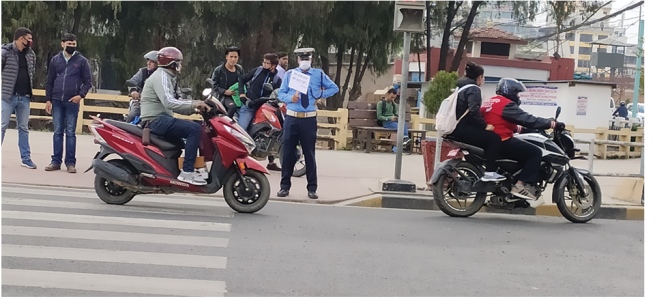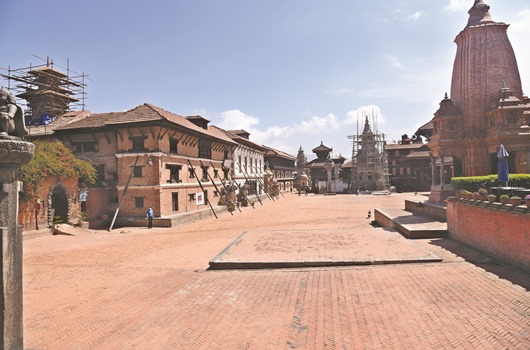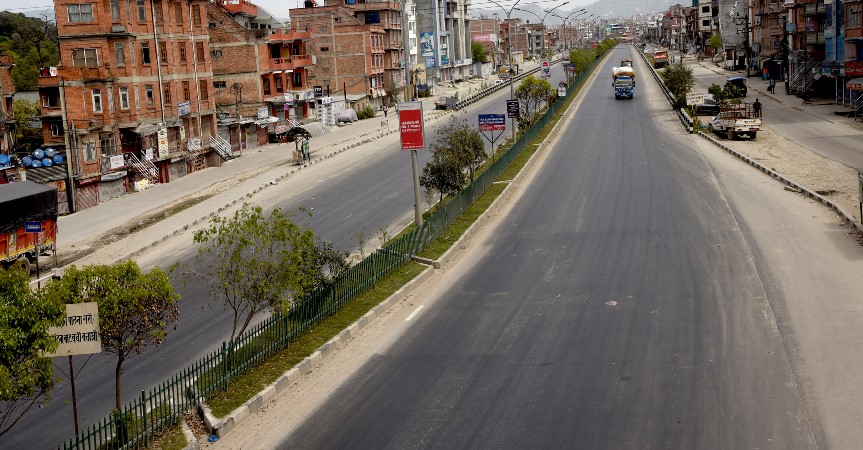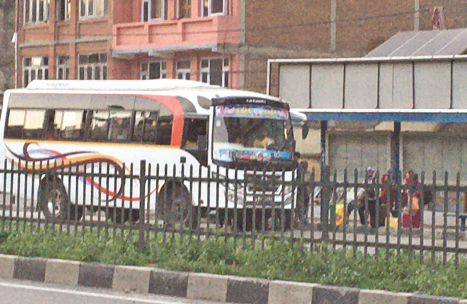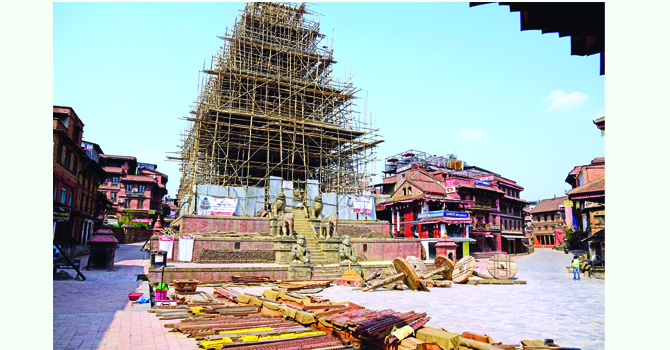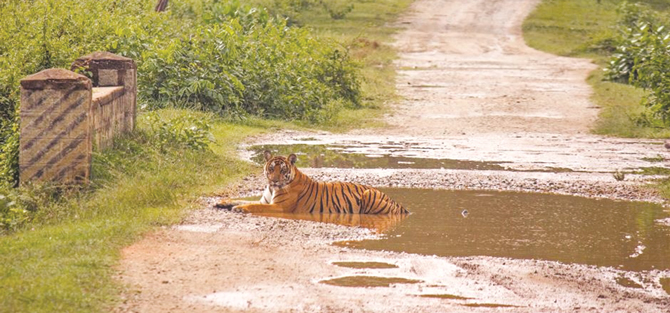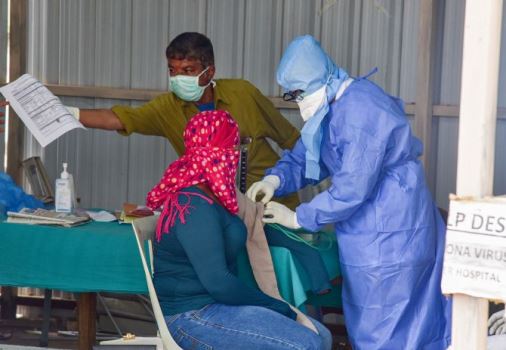Endangered Gharial population gradually growing

By Indira Aryal
Kathmandu, July 18: The number of gharials (scientifically called Gavialis gangeticus), the most critically endangered crocodile species in the world, has been increasing in Gharial Breeding Centre in Kasara of Chitwan National Park (CNP).
These river-dwellers of the Gavialidae family, also known as fish-eating crocs, are on the verge of extinction due to a range of unchecked development projects such as construction of upstream dams restricting water flow, sand mining, riverbank erosion, fishing, poaching and others.
Dubbed as an indicator species of healthy freshwater ecosystems, Gharial is one of the protected reptiles of Nepal under Schedule I of National Parks and Wildlife Conservation Act, 1973.
In its bid to conserve the amphibian reptiles, the Gharial Breeding Centre collects wild eggs from the banks of Rapti and Narayani rivers, hatches them and safely releases the baby gharials into their natural habitat. This year, the centre has been successful in hatching 258 babies. Some 437 eggs were collected from the rivers and the centre gained 70 per cent success in hatching, said Saroj Mani Poudel, Breeding Centre chief.
Poudel, who is also an assistant conservation officer at CNP, said that the eggs were collected from Dudhaura of Rapti River, Hattidandi of Khorsor and Velauji of Narayani River. The eggs took exactly 85 days to hatch, he added.
According to Poudel, out of the total 448 eggs collected, 11 were eaten by squirrels, and 10 were kept in an incubator by foreign researchers.
Eggs were collected in the first week of April. Hatching started from the first week of July. When the new-born gharials turn four to five years, they will be released into various rivers throughout the country.
Since 1981, gharials have been released into several rivers of the country. Some 1,515 baby gharials have already been released in the rivers including Rapti, Narayani, Kaligandanki, Koshi, Karnali and Babai so far. Last year, 85 gharials were released into different rivers. At present, there are around 800 gharials at the breeding centre including newborns.
Fishing has been banned in the rivers to protect the species, Poudel informed.
Naturally hatched 181 baby gharials have been seen in Dudhaura area of Rapti River. Natural breeding has been spotted in other rivers as well, and that bodes well for the conservation of the species. According to a census in 2016, 198 gharials were found in the country’s rivers. “Conservation of the species has become challenging, because most of the gharials raised in our rivers have been taken to India by the flooded rivers, and their odds of returning are slim,” Poudel said.
Making the matter worse, various human activities including fishing and extracting stones, sand and pebbles from the bank of rivers are the main causes behind the destruction of their habitats in the country. So they enter into Indian rivers in search of prey, he added.
Nepal has also been conserving crocodiles since they became endangered in the world. In response to this, the Government of Nepal established the Gharial Breeding Centre in 1978 in Kasara of CNP to allow them lay eggs in artificial conditions resembling natural ones, and rear the young ones until they get released into the rivers in order to ensure a viable population in the wild, according to National Trust for Nature Conservation (NTNC).
Unsustainable fishing practices, industrial pollution and gharial hunting are persisting problems that need to be overcome by engaging local communities in gharial conservation, along with rigorous enforcement of wetland laws and regulations, says the NTNC.
Recent News

Do not make expressions casting dout on election: EC
14 Apr, 2022
CM Bhatta says may New Year 2079 BS inspire positive thinking
14 Apr, 2022
Three new cases, 44 recoveries in 24 hours
14 Apr, 2022
689 climbers of 84 teams so far acquire permits for climbing various peaks this spring season
14 Apr, 2022
How the rising cost of living crisis is impacting Nepal
14 Apr, 2022
US military confirms an interstellar meteor collided with Earth
14 Apr, 2022
Valneva Covid vaccine approved for use in UK
14 Apr, 2022
Chair Prachanda highlights need of unity among Maoist, Communist forces
14 Apr, 2022
Ranbir Kapoor and Alia Bhatt: Bollywood toasts star couple on wedding
14 Apr, 2022
President Bhandari confers decorations (Photo Feature)
14 Apr, 2022



